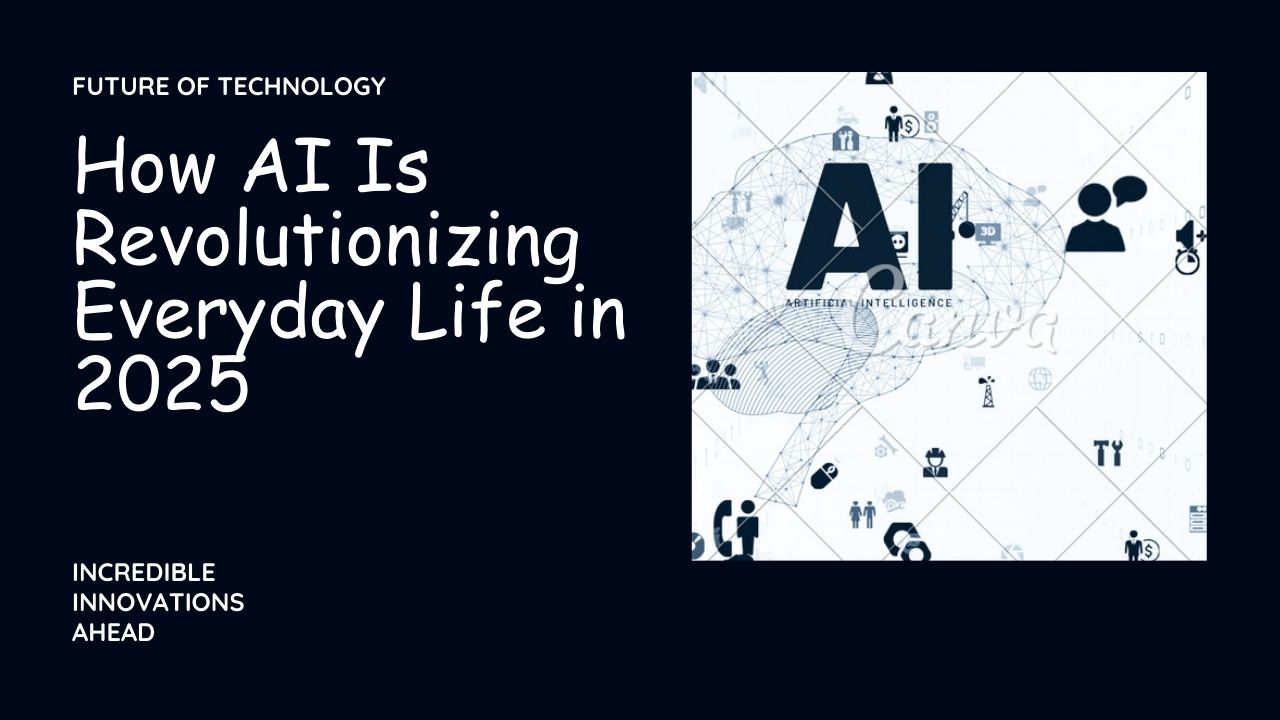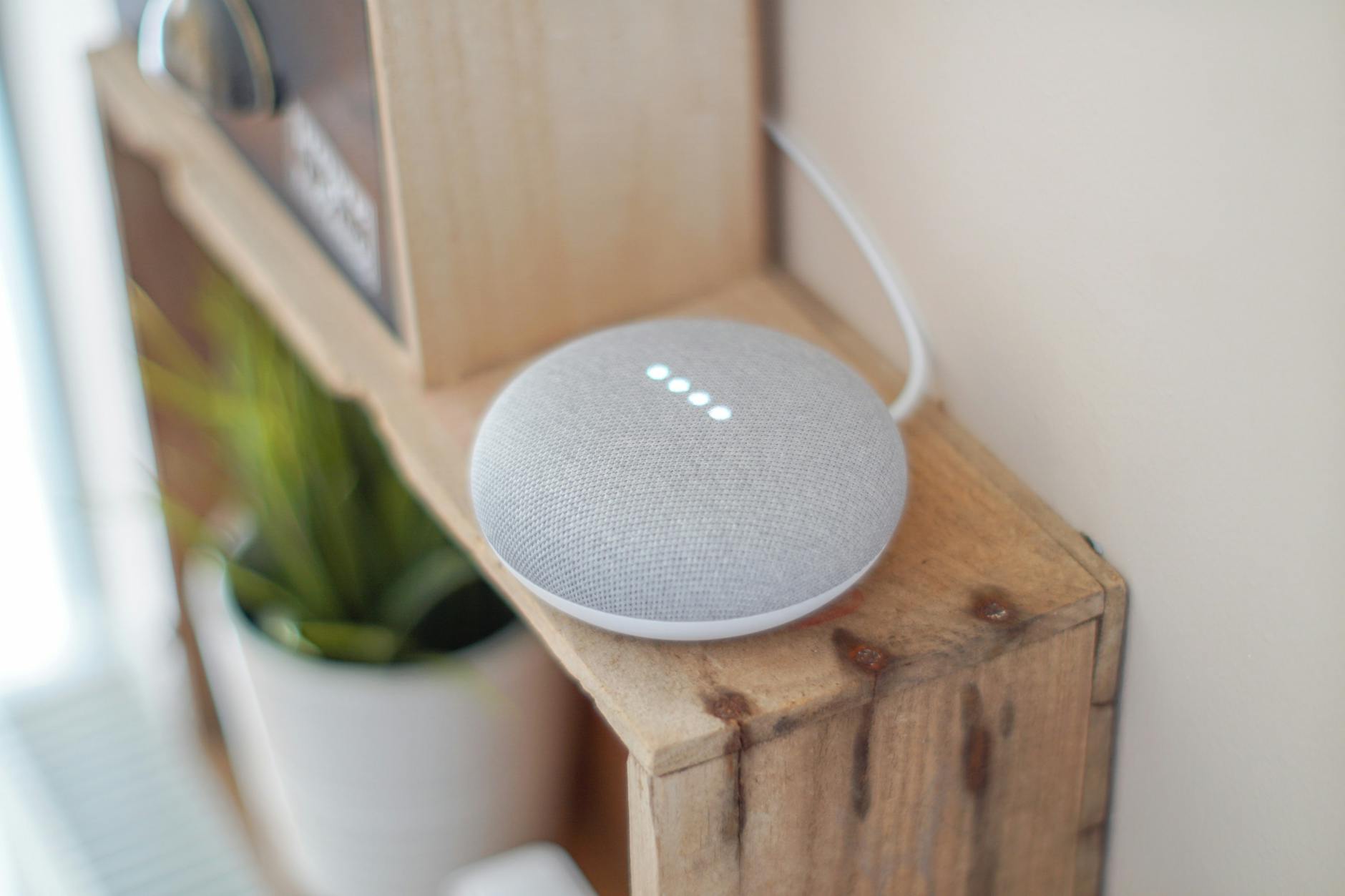
Imagine waking up to a home that anticipates your every need, driving to work in a car that navigates itself, and receiving medical care tailored to your unique genetic makeup. This isn’t a scene from a sci-fi movie—it’s a glimpse into our very near future.�
As we approach 2025, Artificial Intelligence (AI) is no longer confined to tech labs and Silicon Valley boardrooms. It’s weaving itself into the fabric of our daily lives, transforming everything from how we manage our homes to how we shop, learn, and even heal. But what does this AI revolution really mean for you and me?�
In this post, we’ll explore five key areas where AI is making waves: home automation, healthcare, transportation, education, and retail. Get ready to discover how these advancements are not just changing our routines, but revolutionizing our entire way of life. Let’s dive in and uncover the exciting future that awaits us in 2025!
�
AI in Home Automation

Smart energy management
AI-powered smart energy management systems are revolutionizing how we consume and conserve energy in our homes. These systems use advanced algorithms to analyze household energy usage patterns and optimize consumption. Here’s a breakdown of key features:
-
- Real-time energy monitoring
-
- Automated appliance control
-
- Predictive maintenance alerts
-
- Integration with renewable energy sources
| Feature | Benefit |
|---|---|
| Real-time monitoring | Instant awareness of energy usage |
| Automated control | Effortless energy savings |
| Predictive maintenance | Reduced repair costs and downtime |
| Renewable integration | Increased sustainability |
Personalized climate control
AI takes home comfort to the next level with personalized climate control. These systems learn individual preferences and adjust temperature, humidity, and air quality accordingly. They can even predict when occupants will return home and pre-adjust settings for optimal comfort.
AI-powered security systems
Home security gets a significant boost from AI. Advanced systems now include:
-
- Facial recognition for authorized entry
-
- Anomaly detection to identify unusual activity
-
- Intelligent camera systems with real-time alerts
-
- Predictive threat analysis
Voice-activated home assistants
AI-powered voice assistants have become central hubs for home automation. They can:
-
- Control all connected devices
-
- Learn and adapt to user habits
-
- Provide personalized recommendations
-
- Assist with daily tasks and scheduling
These assistants continuously improve, offering more natural interactions and increasingly complex task management capabilities.
�
AI Transforming Healthcare

Early disease detection
AI-powered systems are revolutionizing early disease detection, significantly improving patient outcomes. These systems utilize machine learning algorithms to analyze vast amounts of medical data, including:
-
- Medical imaging (X-rays, MRIs, CT scans)
-
- Genetic information
-
- Electronic health records
-
- Wearable device data
By processing this information, AI can identify patterns and anomalies that might escape human detection, leading to earlier and more accurate diagnoses.
| Disease | AI Detection Method | Improvement in Early Detection |
|---|---|---|
| Cancer | Image analysis | Up to 95% accuracy |
| Alzheimer’s | Speech pattern analysis | 5+ years earlier diagnosis |
| Heart Disease | ECG data interpretation | 80% reduction in false positives |
Personalized treatment plans
AI is enabling healthcare providers to create highly personalized treatment plans tailored to individual patients. By analyzing a patient’s genetic makeup, lifestyle factors, and medical history, AI algorithms can:
-
- Predict treatment outcomes
-
- Identify potential drug interactions
-
- Suggest optimal medication dosages
-
- Recommend lifestyle changes
This personalized approach leads to more effective treatments, reduced side effects, and improved patient compliance.
Remote patient monitoring
AI-driven remote monitoring systems are transforming how healthcare is delivered outside of traditional clinical settings. These systems utilize:
-
- Wearable devices
-
- Smart home sensors
-
- Mobile applications
By continuously collecting and analyzing patient data, AI can:
-
- Detect early signs of health deterioration
-
- Provide real-time alerts to healthcare providers
-
- Offer personalized health recommendations to patients
This proactive approach reduces hospital readmissions, improves chronic disease management, and enhances overall patient care. As we move forward, the integration of AI in transportation will further enhance accessibility to healthcare services.
�
AI in Transportation

Self-driving vehicles
Self-driving vehicles have become a reality in 2025, transforming the way we travel. These autonomous machines utilize advanced AI algorithms to navigate roads safely and efficiently. Here’s a breakdown of their key features:
-
- Advanced sensors for real-time environment scanning
-
- Machine learning algorithms for decision-making
-
- Continuous software updates for improved performance
-
- Integration with smart city infrastructure
The adoption of self-driving vehicles has led to significant benefits:
| Benefit | Description |
|---|---|
| Safety | Reduced accidents due to elimination of human error |
| Efficiency | Optimized traffic flow and reduced congestion |
| Accessibility | Increased mobility for elderly and disabled individuals |
| Sustainability | Lower emissions through optimized driving patterns |
Intelligent traffic management
AI-powered traffic management systems have revolutionized urban mobility. These systems analyze real-time data from various sources to optimize traffic flow and reduce congestion. Key components include:
-
- Smart traffic signals that adapt to traffic patterns
-
- Predictive analytics for anticipating traffic bottlenecks
-
- Integration with emergency services for faster response times
-
- Dynamic road pricing based on traffic conditions
Personalized route optimization
AI has made personalized route optimization a standard feature in navigation systems. These intelligent systems consider various factors to provide tailored route suggestions:
-
- Real-time traffic conditions
-
- User preferences (e.g., scenic routes, avoid tolls)
-
- Vehicle type and fuel efficiency
-
- Weather conditions and road maintenance schedules
By leveraging AI in transportation, cities have become more efficient, safer, and environmentally friendly. As we move forward, we’ll explore how AI is transforming another crucial aspect of our lives: education.
�
AI Enhancing Education

Adaptive learning platforms
AI-powered adaptive learning platforms are reshaping the educational landscape in 2025. These platforms use sophisticated algorithms to analyze students’ learning patterns, strengths, and weaknesses in real-time. By continuously adjusting the difficulty and content of lessons, they ensure each student receives a tailored learning experience.
Key features of adaptive learning platforms:
-
- Dynamic content adjustment
-
- Real-time progress tracking
-
- Personalized study plans
-
- Intelligent resource recommendations
| Traditional Learning | Adaptive Learning |
|---|---|
| One-size-fits-all | Personalized |
| Static content | Dynamic content |
| Periodic assessments | Continuous evaluation |
| Fixed pace | Flexible pace |
AI tutors and virtual classmates
AI tutors are becoming an integral part of education, providing 24/7 support and guidance to students. These intelligent assistants can answer questions, explain complex concepts, and even engage in subject-specific discussions. Virtual classmates, powered by AI, facilitate collaborative learning experiences, allowing students to practice group work and communication skills in a safe, controlled environment.
Automated grading and feedback
With AI-driven automated grading systems, educators can now focus more on teaching and less on administrative tasks. These systems not only grade assignments quickly but also provide detailed, constructive feedback to students. This immediate feedback loop helps students identify areas for improvement and accelerates their learning process.
Personalized curriculum development
AI algorithms analyze vast amounts of educational data to create personalized curricula tailored to each student’s learning style, pace, and goals. This approach ensures that students are always challenged at the right level, maintaining engagement and motivation throughout their educational journey.
Now that we’ve explored how AI is enhancing education, let’s look at its impact on the retail sector.
�
AI Revolutionizing Retail

Hyper-personalized shopping experiences
AI-driven algorithms analyze vast amounts of customer data to create tailored shopping experiences. These systems consider factors such as:
-
- Purchase history
-
- Browsing behavior
-
- Social media activity
-
- Demographic information
By leveraging this data, retailers can offer personalized product recommendations, dynamic pricing, and targeted marketing campaigns. This level of customization enhances customer satisfaction and increases sales conversions.
| AI-Powered Feature | Benefits |
|---|---|
| Product Recommendations | Increases average order value |
| Dynamic Pricing | Maximizes revenue and customer satisfaction |
| Targeted Marketing | Improves campaign effectiveness |
AI-powered customer service
AI chatbots and virtual assistants have revolutionized customer service in retail. These intelligent systems can:
-
- Handle multiple customer inquiries simultaneously
-
- Provide 24/7 support
-
- Offer instant responses to common questions
-
- Escalate complex issues to human agents when necessary
By automating routine customer interactions, retailers can reduce operational costs while improving response times and overall customer satisfaction.
Cashier-less stores
The concept of cashier-less stores has gained significant traction, with AI and computer vision technologies at the forefront. These stores utilize:
-
- Advanced cameras and sensors
-
- Machine learning algorithms
-
- Mobile payment systems
Customers can simply walk in, pick up items, and leave without traditional checkout processes. AI systems automatically track selected items and charge customers’ accounts accordingly. This streamlined shopping experience not only saves time for consumers but also reduces labor costs for retailers.
As we move forward, the integration of AI in retail will continue to reshape the shopping landscape, offering unprecedented convenience and efficiency for both consumers and businesses alike.

As we look towards 2025, it’s clear that artificial intelligence is no longer confined to the realm of science fiction. From our homes to our hospitals, from our roads to our classrooms, and even in our shopping experiences, AI is becoming an integral part of our daily lives. The seamless integration of AI into home automation systems, healthcare diagnostics, autonomous vehicles, personalized learning platforms, and retail experiences is transforming the way we live, work, and interact with the world around us.
The future with AI is not just about technological advancements; it’s about enhancing human capabilities and improving our quality of life. As we embrace these innovations, it’s crucial to stay informed and adaptable. By understanding and leveraging AI’s potential, we can shape a future where technology serves as a powerful tool for progress, efficiency, and human-centric solutions across all aspects of our lives.
